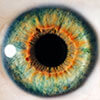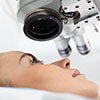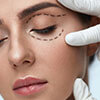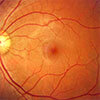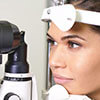Northwest Eye Surgeons and Whatcom Eye Surgeons have recently begun offering the latest in cataract surgery technology, the Light Adjustable Lens (LAL) from RxSight. LALs are made of a special photosensitive material that allows the surgeon to shift the shape, and therefore power, of the lens after cataract surgery, using a UV Light Delivering Device (LDD). Patients receive their initial treatment around 2-3 weeks after their 1 day and 1 week evaluations. The non-invasive LDD treatments take anywhere from about 45 seconds to 2 minutes depending on the amount of refractive error to be corrected. At least 3 treatments will be necessary to lock in the final post-refractive desired outcome. Immediately after surgery, the patient will need to wear the provided UV glasses during all waking hours, to prevent outside sources of UV from self-adjusting the lens. The refraction will set in about 48 hours after the first treatment. The patient can then “test drive” their vision, returning for a re-refraction and follow-up to see how they feel about their vision a week later. Once the desired target is reached, 2 “lock-in” treatments are needed at least one week apart to officially set the lens. After the final lock-in, the patient wears their UV glasses for 48 hours, then can discontinue wear.


In my clinical observations thus far, around 4-5 total treatments appears to be the standard. Patients generally seemed to be so pleased with their vision after surgery, and report that wearing the provided UV protecting glasses does not seem to bother them much at all. Patients also seem to appreciate making the minor tweaks in the prescription, having the ability to go out in the world, and then return with feedback. It puts some of the care in the patient’s hands, which I believe makes them more comfortable making decisions about their surgical outcomes. Studies have shown that patient’s uncorrected vision has a 1.3% chance of being less than 20/32, as compared to 10.9% risk or more with other lenses.

According to Rx Sight, “The ability to treat 0.50 D of postoperative cylinder makes the RxSight LAL the only IOL in the United States approved to correct this level of vision-altering astigmatism. Astigmatism of as little as 0.50 D can reduce visual acuity by one line, and the impact on dynamic, functional visual acuity and low-contrast acuity is even greater.” Another great option is offering Extended Depth of Focus, or anywhere from -0.50 to -1.25 in the non-dominant eye that allows patients to function well for computer or near distances. Patients that I have treated thus far with EDOF have been very happy with their vision. The initial EDOF treatment must be performed at treatment #1 in the non-dominant eye; for example, if a patient changes their mind later and wants EDOF after the initial treatment, this unfortunately is not possible to do. This is one of the reasons it is important to thoroughly discuss post-operative vision goals with the patient before starting any LDD treatments.

The technology behind LAL’s is absolutely fascinating, and I believe it will be the way of the future for cataract surgery. Seeing patients experience improved sight and discuss the way it has changed their lives for the better is so very rewarding.
 Author: Lauren E. Bobick, OD, FAAO
Author: Lauren E. Bobick, OD, FAAO
Specialty: Medical Eye Care
Mount Vernon
Bellingham
I joined NWES in January 2022 in order to continue my focus on ocular disease and post-operative care. Working in a team format with our ophthalmologists and other optometrists is a great example of how the professions can not only coexist for the betterment of our patients, but thrive.
 Author: Lauren E. Bobick, OD, FAAO
Author: Lauren E. Bobick, OD, FAAO 


